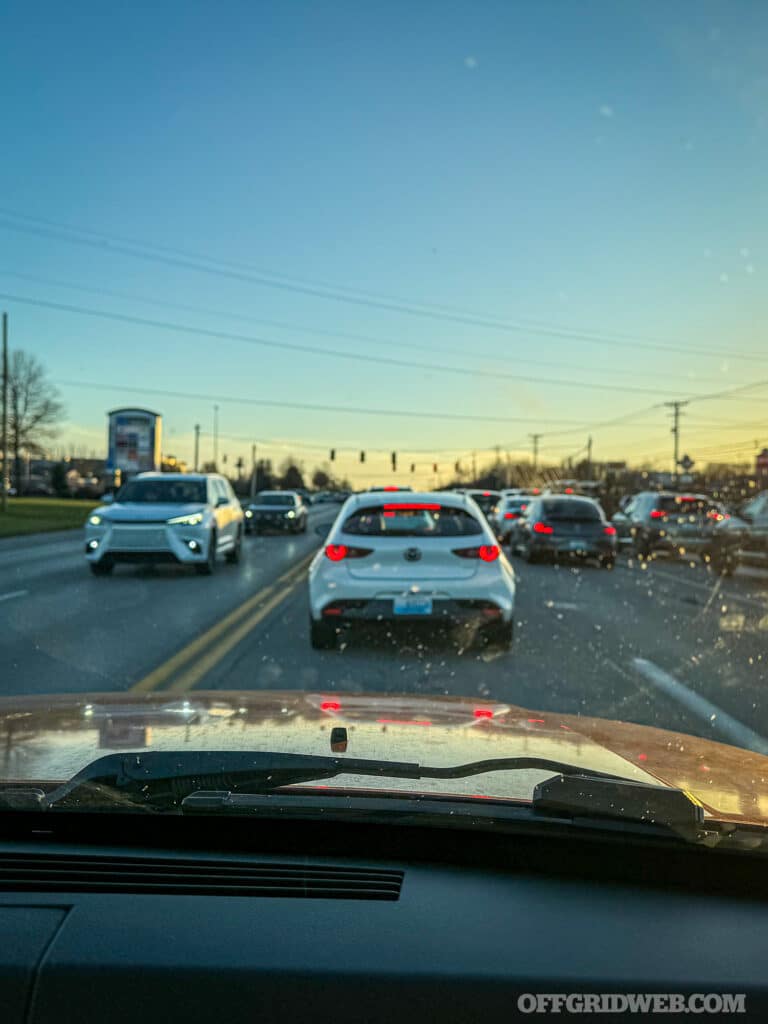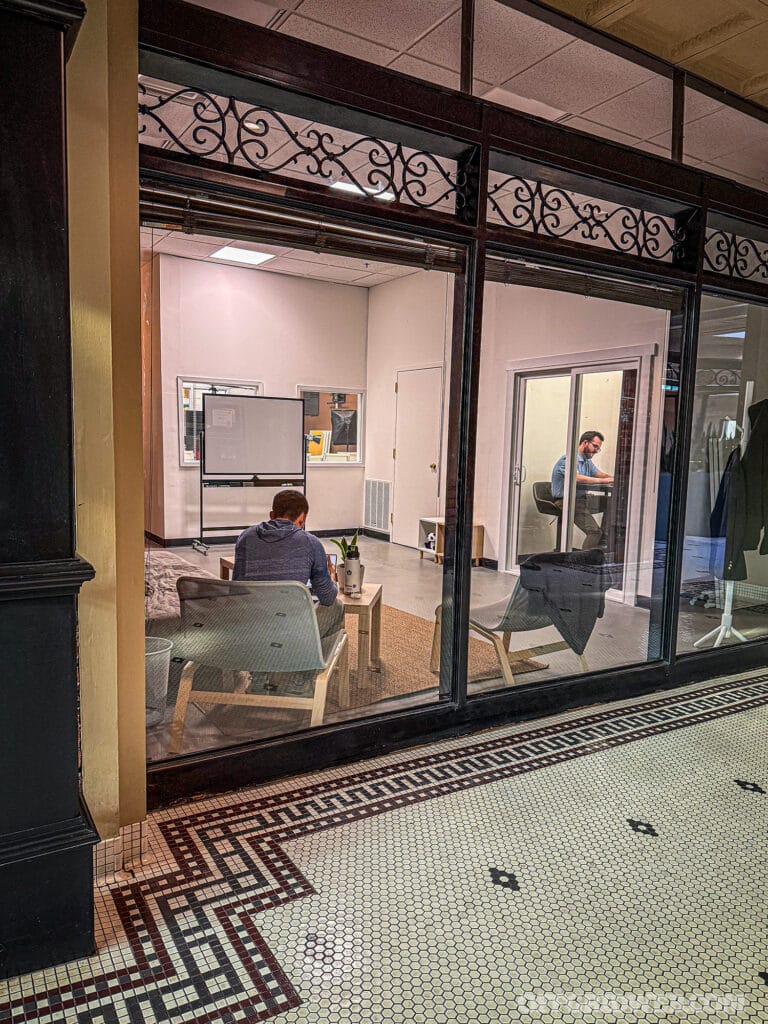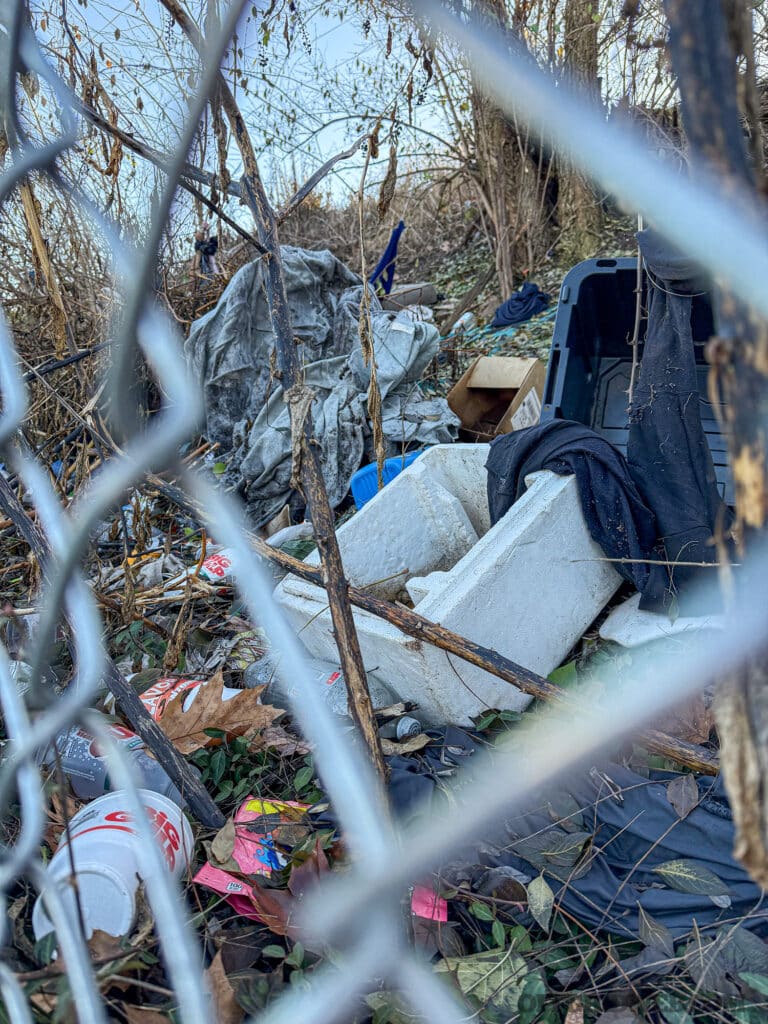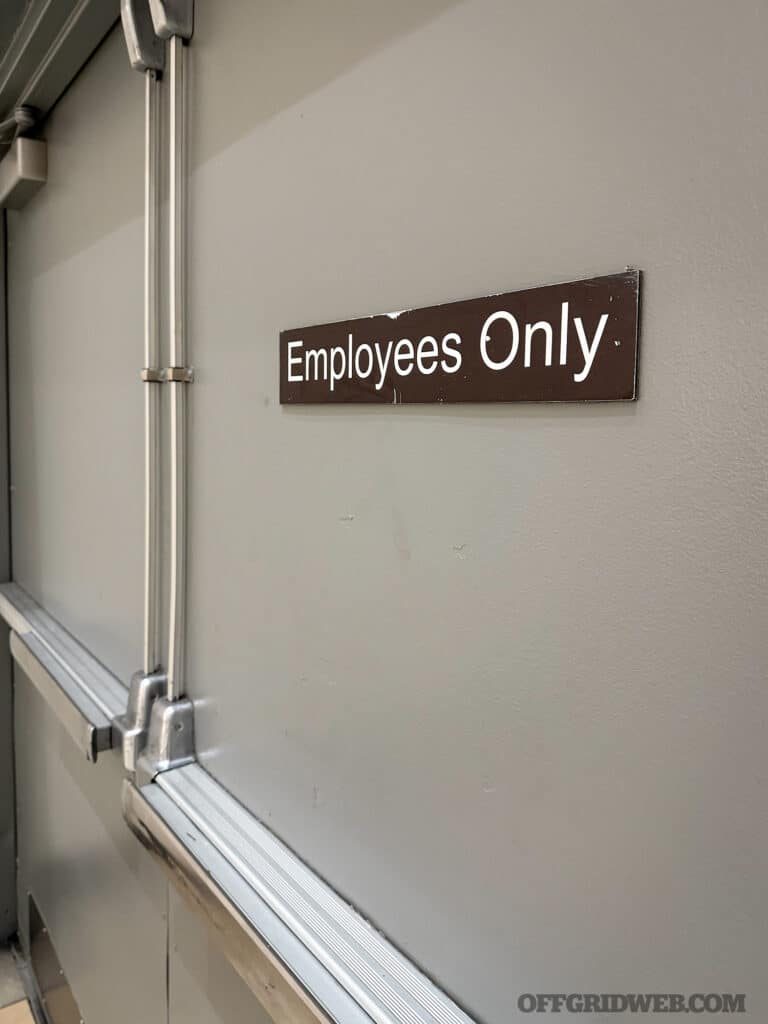Imagine walking into an unfamiliar environment and being able to immediately assess its safety, potential threats, and opportunities for escape or advantage. This skill is not just reserved for trained professionals like military personnel or law enforcement. Civilians can develop the same ability to read places and situations by understanding how our sensory systems, cognitive processes, and situational awareness work. Armed with these understandings, we can make better decisions and stay one step ahead of potential dangers.
You could be navigating a crowded city street, exploring a remote hiking trail, or simply assessing the atmosphere at a social gathering. Having the ability to “read the room” can provide a significant advantage. Developing this skill enhances personal safety and builds confidence in handling unpredictable situations. By becoming more attuned to environmental cues and patterns, you can transform ordinary observations into actionable insights, empowering you to act decisively and effectively in any setting.

Maintain space between your vehicle and others at stoplights, ensuring an escape route. Position yourself in outer lanes whenever possible for easier exits.
Foundations of Situational Awareness
Situational awareness is the cornerstone of effectively reading places. It involves observing and understanding your environment to anticipate what might happen next. This proactive ability can help you make informed decisions and respond appropriately to dynamic circumstances, increasing your safety and confidence. This skill can be broken down into three levels:
Level 1 – Perception: Observing and recognizing situational elements, such as people, objects, and environmental factors. By paying close attention to these elements, you can build an accurate picture of your surroundings and their current state. The perception level is the foundation of developing situational awareness.
Level 2 – Comprehension: Interpreting and evaluating what these observations mean. Understanding the significance of what you perceive allows you to identify potential patterns and anomalies that could indicate safety or danger. This level connects what you see to actionable meaning, allowing you to chart a decisive course of action.
Level 3 – Projection: Anticipating future events based on your understanding of the current situation. Projecting outcomes lets you plan actions that mitigate risks or capitalize on opportunities. This forward-thinking approach helps avoid reactive choices and fosters proactive behavior.
Achieving situational awareness begins with a firm grasp of how our sensory systems gather information and how our brain processes it. Regular practice and conscious observation can refine these skills, allowing you to respond effectively in both routine and high-pressure situations.

Parking garages often contain contrasting light and dark areas. The amount of light present determines how much you can see and what may remain hidden.
How Our Brain and Eyes Work Together
The brain and eyes work in concert to observe and interpret our surroundings. Here's a simplified model:
Sensory Input: Your eyes detect stimuli like movement, colors, and shapes. This raw data enters sensory memory, where it’s held briefly before moving to working memory if deemed necessary. Paying attention to subtle changes in these stimuli can significantly enhance your ability to notice critical details.
Working Memory: This limited-capacity system processes information in real time. To avoid overloading it, focus on the most relevant stimuli in your environment. Techniques like “chunking” information or associating it with familiar patterns can improve working memory efficiency.
Long-Term Memory: When working memory successfully integrates new data with preexisting knowledge, it’s stored in long-term memory for future reference. Regularly revisiting and rehearsing this stored information strengthens retrieval and aids quicker decision-making in similar situations.
The more familiar you are with a place or situation, the more your brain relies on top-down processing — drawing on past experiences to quickly assess the scene. Novices, however, rely more on bottom-up processing, analyzing features like motion or color without prior context.

Take note when an area that’s usually bustling with activity suddenly becomes empty and inactive — it could indicate a potential shift in circumstances.
Geographics, Atmospherics, and Space Awareness
To effectively read places, understanding the concepts of geographics, atmospherics, and space awareness is crucial. These principles form the backbone of situational awareness, enabling you to make informed decisions and stay ahead of potential dangers.
Geographics
This pertains to the way people interact with their environment. Observing habitual areas (public spaces) and anchor points (restricted or private areas, such as your home), you can deduce behavior patterns and potential risks. For instance, a bustling coffee shop is a habitual area, while a locked room in the back of a store might be an anchor point. Understanding these interactions helps you identify areas of safety and vulnerability in any setting.
Natural Lines of Drift
These are paths of least resistance that people and animals naturally follow. In rural wildlife hunting and tracking, these are often called wildlife corridors. Recognizing these lines can help you predict where people will move and identify potential chokepoints or funnels — areas that could become dangerous in an emergency. Awareness of these paths can guide you to safer alternatives in times of crisis. Many in the tactical area refer to a subset of this as the “fatal funnel.” This is often a doorway, or similar entrance where many people will travel through. These are areas to avoid when one needs to escape a situation. Always know alternative exits.
Atmospherics
Rapid environmental changes, such as a sudden crowd gathering or an abrupt absence of people, can signal potential threats. Other clues include graffiti, unusual objects, or specific hand signals. These observations provide context to decide whether to stay, leave, or take action. Staying attuned to these subtle shifts can significantly enhance your preparedness and ability to react effectively.
Positive and Negative Space
Positive space includes solid objects like buildings, trees, or vehicles that naturally attract the eye. Negative space, the areas between these objects, often goes unnoticed but is equally important to observe. Mind clutter is another excellent way to understand this concept. Negative areas are where there’s so much information to process, or the complete absence of it, that the mind cannot or does not process it. Good camouflage typically mimics negative space, so consciously scanning these areas can reveal hidden threats or opportunities. Training your eye to assess both spaces ensures a complete understanding of your surroundings.
Light and Shadow
Shifting light and shadow can conceal or reveal details in your environment. A previously unseen individual or object might appear as lighting conditions change. Observing how light interacts with your surroundings helps maintain awareness of potential risks. Understanding the dynamics of light and shadow can provide a critical edge in recognizing hidden dangers or opportunities.

Glass provides a sense of social distance but doesn’t prevent others from observing your actions and behavior.
Attention and Cognitive Load
Attention is the process of directing focus toward relevant stimuli while filtering out distractions, a crucial component of effective situational awareness. Managing cognitive load — the mental effort required to process information — is key to staying alert and responsive in dynamic situations.
Selective attention plays a vital role in this process. By concentrating on critical elements such as exits, escape routes, or environmental anomalies, you can prioritize what truly matters. Multitasking in high-stakes scenarios, however, can dilute awareness and should be avoided.
To handle cognitive load efficiently, experts employ techniques like “chunking” information and using mnemonics to retain key details. For instance, in a crowded mall, you might mentally associate exits with landmarks like a bookstore or a food court, making them easier to recall in an emergency.
Observation techniques are equally important. Alternating your observation methods helps combat fatigue and prevent change blindness — the inability to notice subtle but significant changes in your surroundings. By periodically rotating your field of vision and using a combination of the naked eye and optical devices, such as binoculars during a wilderness hunt, you can gain fresh perspectives and avoid becoming complacent.
Another advanced skill involves mastering the transition between focused and soft vision. Focused vision allows for intense concentration on specific details, such as spotting a concealed firearm or identifying the exact location of an anomaly. This precision is vital in high-stakes scenarios. In contrast, soft vision expands your awareness, enabling you to scan larger areas without fixating on minute details. This relaxed-but-alert state is especially useful for observing crowds or vast landscapes, such as a hillside in the wilderness, where detecting movement is often more critical than identifying fine details.
Practicing the seamless shift between focused and soft vision enhances your ability to assess and respond to diverse environments effectively. This skill, often emphasized in wilderness survival and awareness training, sharpens your overall situational awareness and prepares you for challenges that demand both precision and adaptability.

An abundance of trash in an area can be a sign of vagrant activity. Stay alert when navigating such spaces.
Creating an Operational Narrative
One of the most effective methods for understanding and navigating an environment is to craft a mental story of the space. By framing observations within a structured narrative, you can gain deeper insights into the dynamics at play and anticipate potential changes. This approach blends careful observation with imagination, enabling you to mentally rehearse scenarios and enhance your preparedness.
Begin by identifying the “characters” in your environment. Who are the individuals present, and what roles might they play? Observing details such as body language, attire, and interpersonal interactions can reveal valuable clues about their intentions and relationships. This awareness can help you better assess the social or situational context and identify potential risks or allies.
Next, take time to consider different perspectives. What might others be thinking or feeling? How could your own biases color your interpretation? By attempting to see the situation through their eyes, you can develop a more nuanced understanding of their motivations and emotional states. This exercise not only sharpens your observational skills but also helps reduce blind spots caused by personal assumptions.
Recognizing precipitating events is another critical element of situational storytelling. These are the actions or patterns that might lead to significant outcomes. For example, noticing someone lingering near an exit or displaying heightened anxiety could indicate a developing issue. These “trigger events” often serve as early warning signs, providing you with an opportunity to act proactively.
Finally, anticipate potential courses of action by visualizing scenarios step by step. What if a fire alarm suddenly goes off? How would you respond if someone became aggressive? Mentally rehearsing these situations allows you to map out possible actions, reactions, and counteractions. This preparation reduces hesitation during critical moments, enabling you to respond decisively and effectively when faced with unexpected challenges.

Anchor points, such as “Employees Only” areas, might serve as a refuge or escape route during critical situations like an active shooter event.
Practical Applications
Integrating situational awareness into everyday life transforms abstract concepts into practical skills, enhancing both personal safety and confidence in navigating various environments. By applying these principles, you can proactively address potential risks and maintain control in diverse situations.
Start by understanding the distinction between habitual areas and anchor points. Public spaces are generally open and accessible, while anchor points — such as restricted areas or employee-only zones — are typically off-limits. If you inadvertently enter an anchor point, exit quickly and without confrontation. Recognizing these boundaries not only prevents unnecessary conflicts but also helps you maintain situational control. Consider the possibility that someone might be monitoring your movements. Reflect on where and how you or your family could be easily accessed and adjust your behavior accordingly.
Be mindful of chokepoints and fatal funnels — places where movement is naturally funneled, like narrow hallways or doorways. These areas increase vulnerability by limiting escape routes. Identifying alternate exits in advance can help you avoid these high-risk zones and reduce potential dangers during emergencies.
Reading behavior is another critical skill. Observing subtle cues in body language, such as nervous movements, closed-off postures, or micro-expressions, can provide early warnings about potential aggression or unease in others. This awareness allows you to assess threats and respond proactively before situations escalate.
Environmental clues also play a significant role in situational awareness. Signs of gang activity, like specific graffiti or colors, can indicate areas to avoid. Similarly, take note of the overall condition of your surroundings. Is it orderly and maintained or chaotic and neglected? These details can help you make informed decisions about where to go and what actions to take.
Vehicle awareness is equally important. When driving, maintain a safe distance from other vehicles at stoplights to ensure you have room to maneuver if necessary. Avoid displaying logos or items in your car that could attract thieves. Additionally, familiarize yourself with exits in parking garages or other confined spaces to ensure you have a quick escape route if needed.
Pay attention to light and shadow dynamics as well. Changes in lighting can significantly impact visibility, either revealing or concealing potential threats. For example, shifting light can expose individuals or hazards that might otherwise remain hidden. Always carry a flashlight to illuminate areas that might otherwise be overlooked.
Situational mapping enhances your readiness to respond to dynamic environments. Create a mental map of your surroundings, noting exits, escape routes, and potential hazards. Regularly update this map as you move through spaces, allowing you to adapt quickly to changes.
Auditory awareness complements your visual observations. Sudden shifts in sound levels, like unexpected silence or new noises, can signal environmental changes or hidden activities. Listening carefully enables you to detect potential threats that might not yet be visible.
Crowd dynamics offer another layer of insight. Observing the flow and behavior of crowds can reveal emerging threats or opportunities. A sudden surge or dispersion of people, for example, might indicate a volatile situation requiring immediate attention. Understanding these patterns helps you navigate safely and effectively through public spaces.

Avoid providing strangers with conversation starters. Vehicle stickers can reveal personal information that bad actors could use to appear familiar.
Building Situational Awareness Skills
Developing the ability to read places effectively requires consistent practice and an active engagement with your surroundings. By incorporating a variety of techniques, you can refine this critical skill and make situational awareness an integral part of your daily life.
One effective method is practicing observation drills. Spend time in public spaces observing people’s behavior, interactions, and movements. Look for patterns and anomalies, such as someone standing still in a busy area or appearing overly nervous or disengaged. Regular practice hones your ability to spot subtle cues and interpret their significance, making it easier to identify potential risks or outliers.
Familiarizing yourself with the layout of frequently visited locations is another valuable step. Study the design of your workplace, local stores, or favorite parks. Take note of exits, chokepoints, and natural lines of drift where people tend to congregate or move. Practice navigating these spaces under different scenarios, imagining how you might leave quickly during an emergency or where you could seek shelter if needed. This preparation helps build muscle memory and confidence in your ability to respond effectively.
Simulation training further enhances situational readiness. Mentally rehearse scenarios you might encounter, such as dealing with an aggressive stranger in a parking lot or responding to a fire alarm in a crowded building. Visualizing these situations conditions your mind and body for quick, decisive action, reducing hesitation during real-life incidents.
Role-playing exercises provide an additional layer of preparation. Engage with friends or family in simulated scenarios, practicing skills like identifying suspicious behavior or planning escape routes. These hands-on experiences reinforce your training and boost confidence in your ability to act under pressure.
Regular environmental scanning is another habit worth cultivating. Train yourself to notice changes in your surroundings, such as shifting light, new objects, or unusual sounds. Incorporating this habit into your daily routine keeps your awareness sharp, even in familiar environments.
Finally, mindfulness practices can significantly enhance your situational awareness. Techniques that focus on staying present in the moment improve your ability to process sensory information, minimize distractions, and make more accurate observations. Being fully engaged with your surroundings ensures you can adapt quickly to changes.
Conclusion
The ability to read places and assess environments is not just a skill for professionals — it’s an essential tool for everyone. You can navigate the world more safely and confidently by enhancing your situational awareness, understanding geographics and atmospherics, and creating operational narratives. Remember, proactively recognizing and avoiding potential dangers is far better than reacting to them after they occur. Practice these techniques regularly, and you’ll find yourself moving through life with heightened awareness and control.

About The Author
Craig Caudill is the director of Nature Reliance School, where he teaches outdoor safety, survival, and tracking skills to individuals and organizations. An accomplished author of several books on backcountry skills, Caudill is also a sought-after consultant for national television and media, including shows like Naked and Afraid and America’s Most Wanted. With decades of experience in wilderness education and situational awareness, Caudill combines practical expertise with a passion for helping others develop resilience and self-reliance. Learn more at www.naturereliance.org.
Read More From Issue 66
Don’t miss essential survival insights—sign up for Recoil Offgrid's free newsletter today!
The post The Art of Reading Places Using Situational Awareness appeared first on RECOIL OFFGRID.
By: Nick Italiano
Title: The Art of Reading Places Using Situational Awareness
Sourced From: www.offgridweb.com/survival/the-art-of-reading-places-using-situational-awareness/
Published Date: Mon, 10 Feb 2025 20:33:53 +0000
------------------------
Did you miss our previous article...
https://bushcrafttips.com/bushcraft-news/survival-through-sere-principles
 What is BushcraftSurvival SkillsToolsVideosBushcraft CampsBushcraft KitsBushcraft ProjectsPrivacy PolicyTerms And Conditions
What is BushcraftSurvival SkillsToolsVideosBushcraft CampsBushcraft KitsBushcraft ProjectsPrivacy PolicyTerms And Conditions
